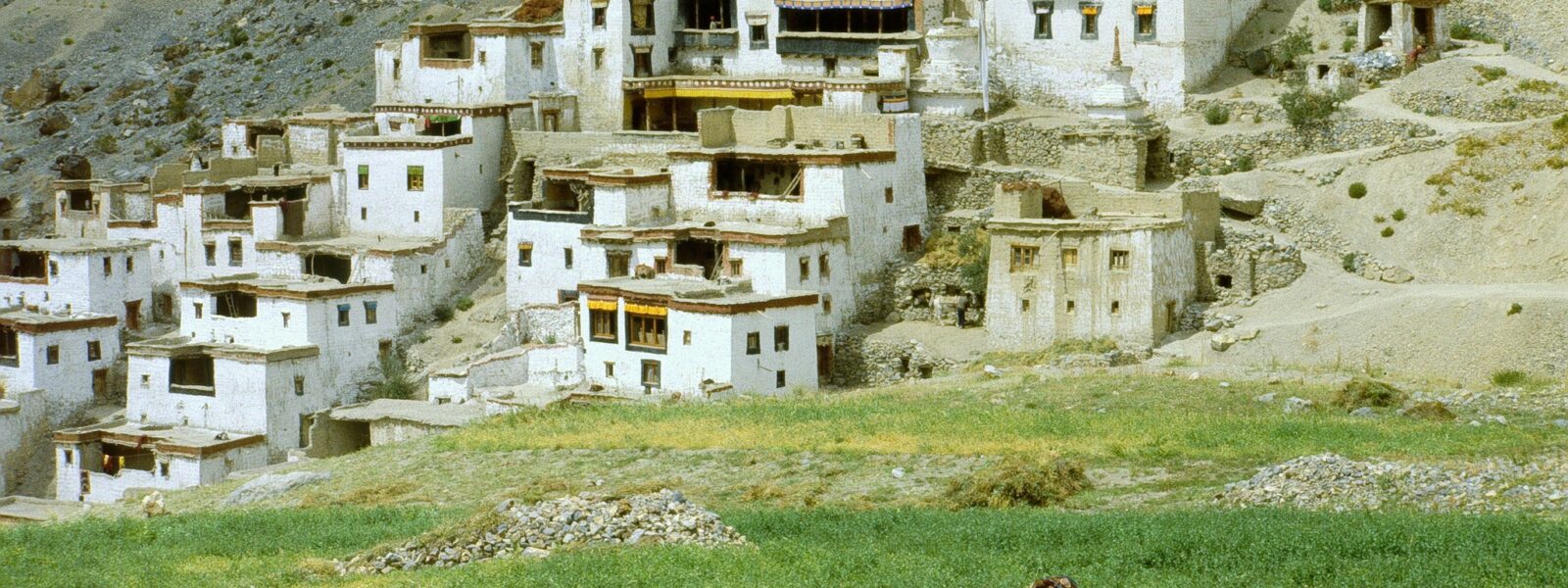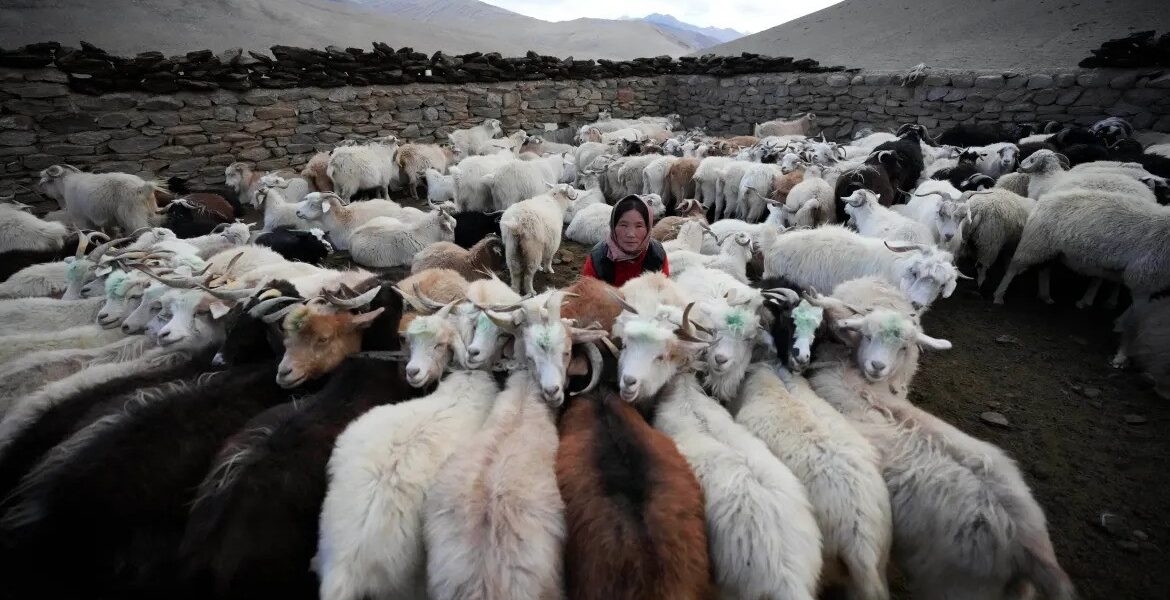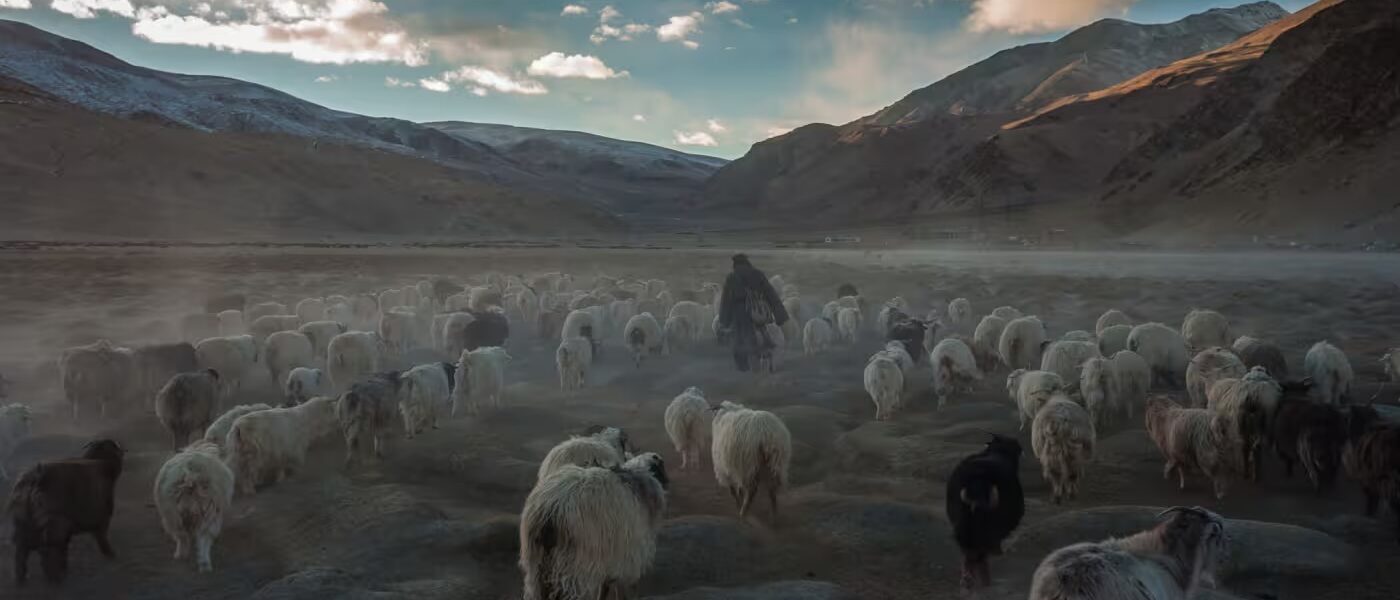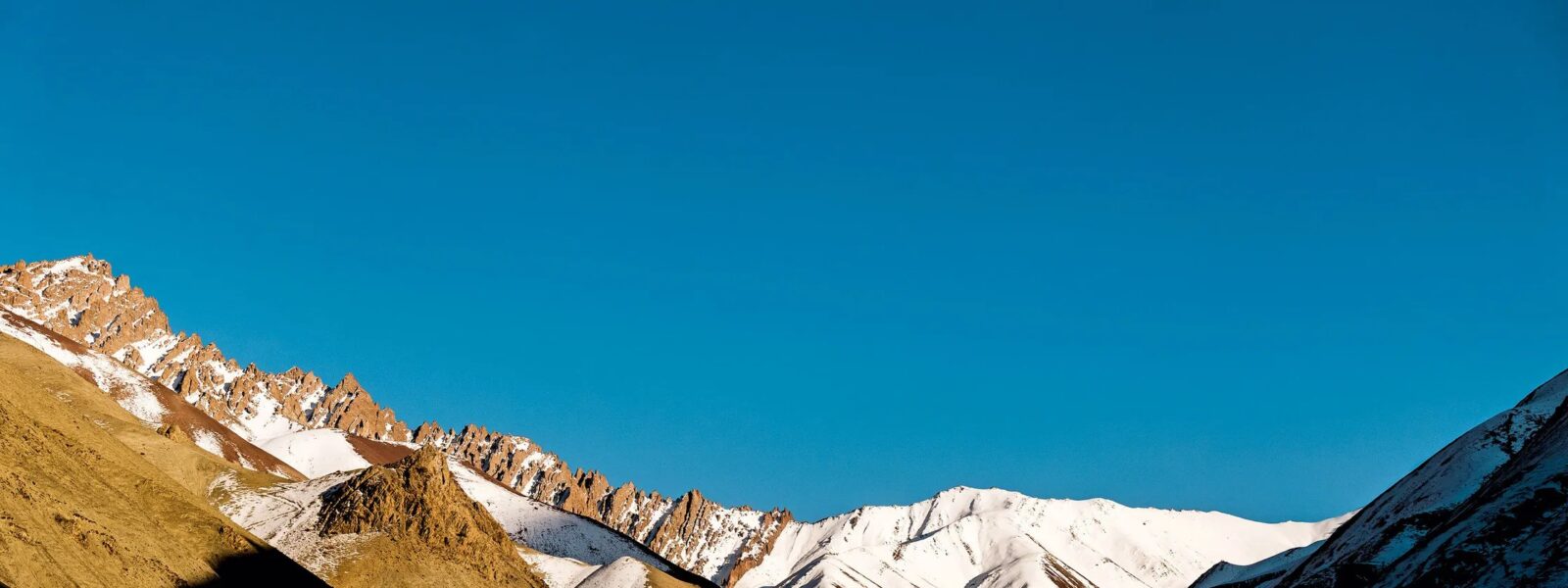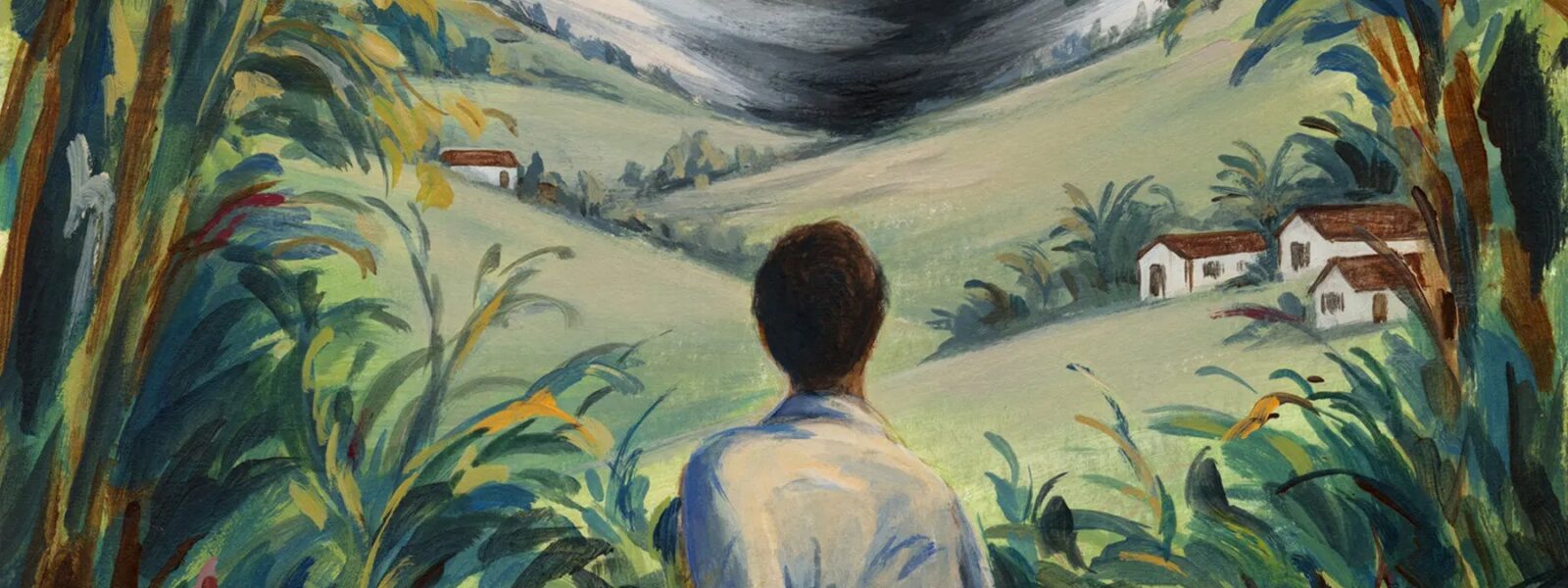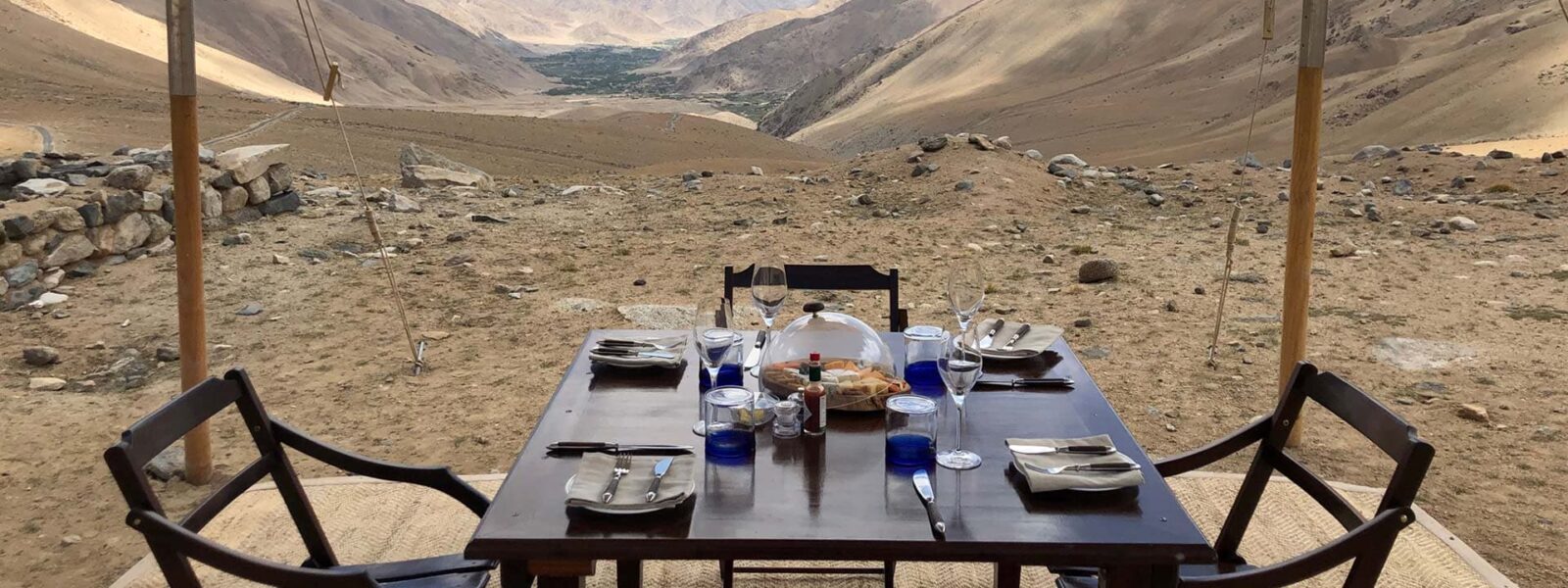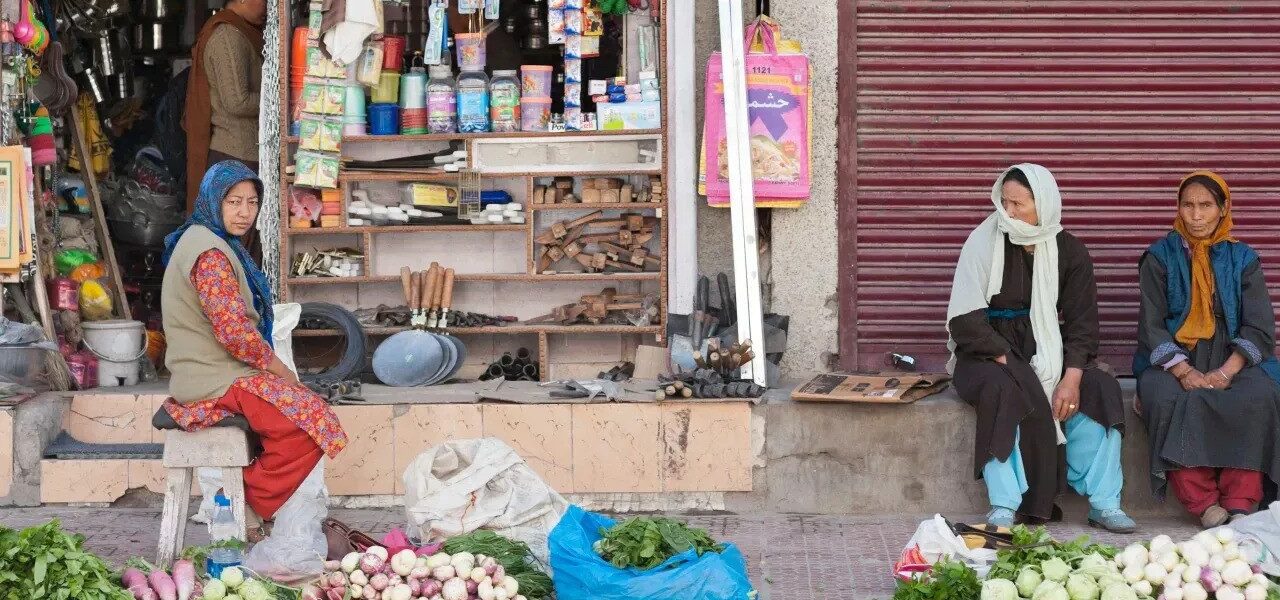Introduction – Why Visit Lingshed?
Tucked away in the rugged heart of the Zanskar Mountains, the village of Lingshed remains one of Ladakh’s most remote and culturally preserved destinations. For those in search of an authentic Himalayan experience, far removed from crowded trails and modern noise, Lingshed offers a rare glimpse into the soul of a region shaped by isolation, spirituality, and tradition. Reaching it isn’t easy — and that’s exactly why it’s so rewarding.
Situated at an altitude of around 3,900 meters, Lingshed is part of the ancient trans-Himalayan corridor that once connected the remote valleys of Zanskar with the Indus Valley. Despite its isolation, this high-altitude Ladakhi village has continued to thrive through a blend of spiritual resilience, self-sufficient agriculture, and a strong sense of community. The journey here may involve days of trekking through wild terrain or rugged drives through mountain passes, but every step taken toward this untouched Himalayan village feels like a pilgrimage.
In recent years, trekkers, photographers, and mindful travelers have begun to seek out Lingshed not for convenience, but for its very inaccessibility. Here, mud-brick homes dot the slopes beneath the Lingshed Monastery, children herd yaks across windswept ridges, and time seems to stretch differently, quietly flowing with the rhythm of daily rituals. You won’t find flashy resorts or souvenir stalls — instead, expect to be welcomed into family-run homestays, where hosts offer butter tea, tsampa, and stories that have echoed across generations.
Lingshed’s cultural identity is deeply rooted in Tibetan Buddhism. The monastery, perched like a crown above the village, plays a central role in the lives of its residents. From morning chants to annual festivals, spiritual life weaves through every thread of this mountain hamlet. Travelers seeking a spiritual retreat in Ladakh often find more than they anticipated — not just peace and reflection, but an intimate understanding of the land’s history and hardships.
So, why visit Lingshed? Because some places on earth can only be understood by walking to them. Because in a world increasingly connected, disconnection can be a gift. And because in Lingshed, you’ll discover that remoteness is not a barrier — it’s an invitation to pause, to observe, and to reconnect with the deeper rhythms of human life in the Himalayas.

How to Reach Lingshed Village
Reaching Lingshed is not a casual affair. It is a journey that demands commitment, patience, and a deep appreciation for the landscape of Ladakh. But for those who accept the challenge, the rewards are beyond measure. Lingshed is accessible by foot or by a rugged combination of road and trek — both options offer breathtaking views and encounters with some of the most remote regions in the Indian Himalayas.
The most popular trekking route to Lingshed begins from Photoksar, a scenic village reached via the Leh–Kargil highway and the high-altitude pass of Singe La. This trail is a segment of the famous Lamayuru to Padum trek — considered one of the most beautiful and isolated trekking paths in Ladakh. From Photoksar, it typically takes two to three days to trek to Lingshed, passing through mountain passes like SirSir La and remote camping spots along the way. This route is ideal for those looking for a true offbeat trekking experience in Zanskar.
For travelers not inclined toward long treks, a more direct — though still demanding — alternative is to travel from Leh via road to Wanla or Hanupatta and continue by foot. Although new roads are being extended toward Lingshed, the final stretch still often requires a hike over high passes. During the warmer months (June to September), the terrain is more accessible, and local guides or porters are available to assist with luggage and navigation.
It is also possible to reach Lingshed as part of a longer Zanskar traverse, coming from Padum via Nyerak. This route is often used by seasoned trekkers or cultural adventurers who include Lingshed as a central point in their Zanskar trekking itinerary. Whichever path you choose, be prepared for altitude, rapidly shifting weather, and limited phone connectivity. Permits are generally not required for Indian nationals, but foreigners may need to register in Leh before venturing into some parts of the Zanskar region.
Ultimately, reaching Lingshed is not just a matter of distance — it’s a transformation. Every ridge climbed and valley crossed peels back a layer of modern distraction. This is not a destination you stumble upon; it’s one you earn. The trek to Lingshed is a physical and emotional ascent, one that sets the stage for everything the village will reveal once you arrive.
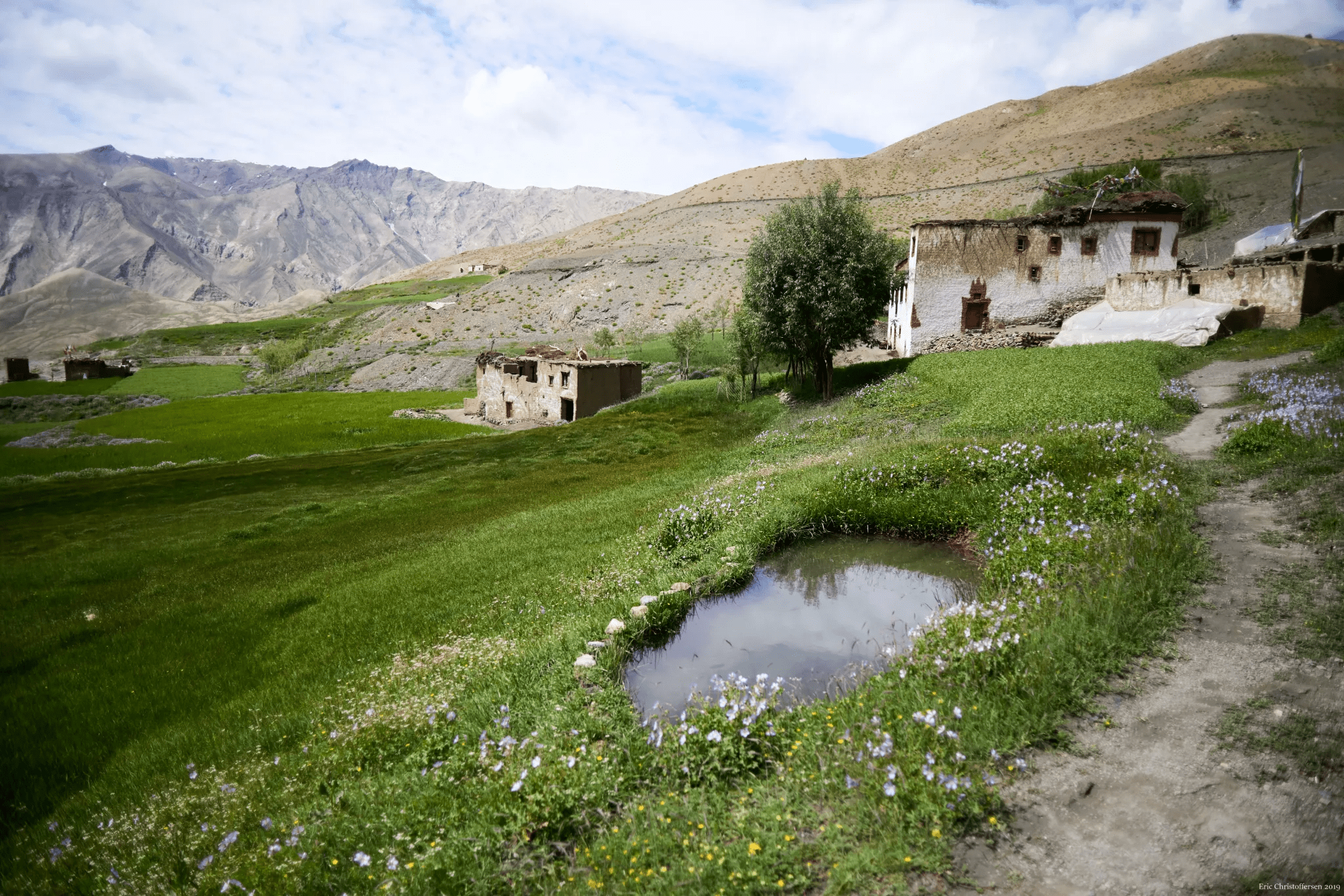
Experiencing the Culture of Lingshed
Life in Lingshed is simple, self-sufficient, and steeped in centuries-old traditions. Cut off from the rest of Ladakh for much of the year, this high-altitude hamlet has developed a rhythm of life that flows in harmony with nature, spirituality, and the seasons. For the traveler willing to slow down, Lingshed offers not just sights, but insights — into a world where community, belief, and endurance are the cornerstones of survival.
At the heart of village life is the Lingshed Monastery, perched dramatically above the settlement like a silent guardian. Believed to have been founded in the 1440s, the gompa belongs to the Gelugpa order of Tibetan Buddhism and serves as both a spiritual and educational center for the surrounding region. Inside its ancient walls, the scent of butter lamps mixes with the sound of chanting monks. Visitors are welcome to observe prayers and explore its murals, statues, and meditation halls — all while being mindful of local customs.
Beyond the monastery, the village itself is a tapestry of stone homes, narrow trails, and terraced fields of barley and peas. Despite the harsh conditions, the people of Lingshed display extraordinary warmth. Travelers often stay in family-run homestays, where you’ll be greeted with yak-butter tea, homemade thukpa, and the kind of hospitality that comes not from profit but from pride. These stays offer a window into daily life in Zanskar, including chores, seasonal festivals, and the quiet power of community bonds.
Lingshed’s culture is deeply tied to oral traditions. Without much internet, electricity, or phone access, stories are passed on through memory, song, and ritual. Children walk long distances to attend the Ngari Institute — a school that balances modern education with spiritual grounding. In the evenings, elders share tales of ancient kings, mountain spirits, and nomadic journeys, often by candlelight in rooms warmed by dung-fueled stoves.
If your visit coincides with a local festival, you’ll witness vibrant gatherings where monks perform masked dances (cham), and villagers wear their finest woolen robes and turquoise-studded jewelry. Unlike the more commercialized celebrations in central Ladakh, these festivals are intimate, spiritual affairs — raw, unfiltered expressions of faith and identity in the Himalayas.
To experience Lingshed is to shed the layers of convenience and rediscover the depth of connection — to land, to ritual, and to one another. It is a place where life moves slowly but meaningfully, where tradition is not a relic but a way of being. And for travelers in search of authenticity, Lingshed is not just a cultural visit — it is a cultural immersion.
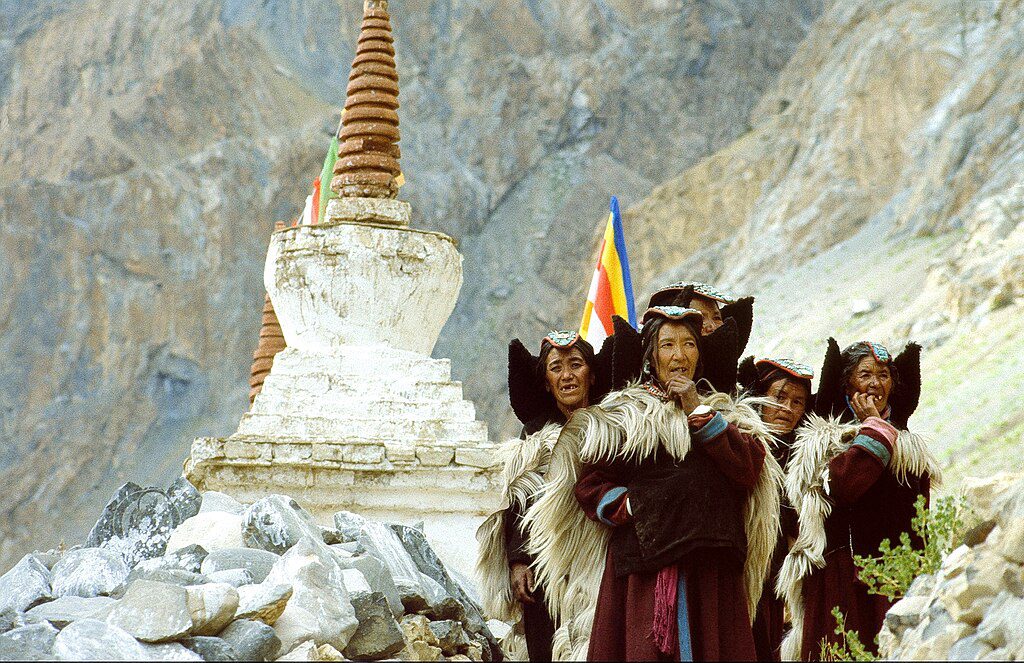
When Is the Best Time to Visit Lingshed?
Lingshed’s remote beauty is deeply influenced by the seasons. The village, perched high in the Zanskar Mountains, experiences an extreme climate that limits access for much of the year. Choosing the right time to visit is crucial — not only for safety and accessibility but also to fully appreciate the rhythms of village life. The best time to visit Lingshed is between late June and early September, when snow has melted from the high passes and trails become navigable once again.
During the short summer window, the region comes alive. Fields of barley ripple in the breeze, wildflowers dot the trekking routes, and villagers prepare for harvest. This is also when most travelers attempt the Photoksar to Lingshed trek or the longer routes from Lamayuru or Padum. Days are warm, with temperatures ranging from 10°C to 20°C, but nights at high altitude still demand thermal layers. Skies remain mostly clear, making it ideal for photographers, stargazers, and those hoping for expansive views of the Zanskar Range.
By mid-October, the first heavy snowfalls begin. Winter in Lingshed is long and unforgiving. From November through April, the village is cut off by snowbound passes. Temperatures often fall below -20°C, and life retreats indoors. While travel during these months is difficult and not recommended for casual visitors, some seasoned explorers do plan winter expeditions — often accompanied by locals and designed with safety in mind. For most travelers, though, this season is best avoided unless part of a special arrangement, such as winter homestay programs or community volunteering.
Spring and autumn are shoulder seasons in this part of Ladakh, and conditions vary from year to year. In May and early June, trails may still be blocked by lingering snow, while in late September, access may quickly deteriorate due to early storms. However, if timed well, these months offer quieter paths and a more intimate experience with the changing landscape.
Regardless of the month, it’s essential to prepare for rapid weather shifts in Lingshed. Rain, snow, and sunshine can all occur within the same day, especially at elevations above 3,500 meters. Always check the latest trail conditions and consult local guides before setting out. Acclimatization is also important — spend a few days in Leh or a nearby lower-altitude area before beginning the journey to avoid altitude sickness.
In essence, timing your visit to Lingshed is about more than just weather. It’s about aligning your journey with the rhythms of the land and the people who call it home. Whether you arrive during the harvest season or the serene silence of early fall, every moment in Lingshed carries a stillness and clarity that few other destinations can offer.
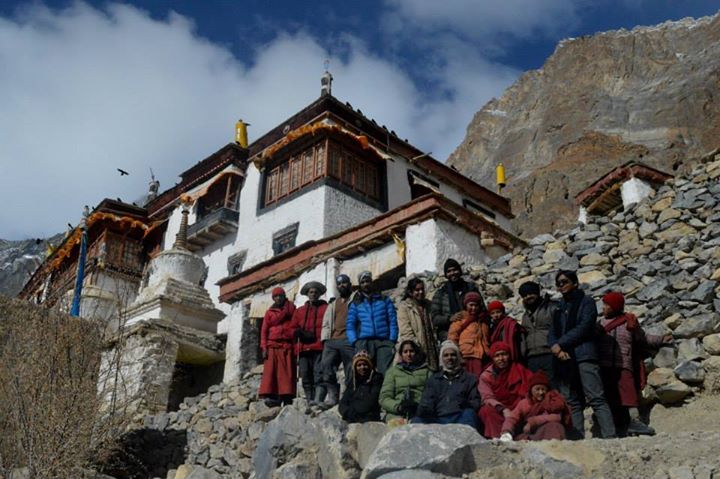
Essential Travel Tips for Lingshed
Traveling to Lingshed is a remarkable experience — but it demands forethought, flexibility, and a genuine respect for local life and landscapes. The remoteness that makes the village so appealing also makes logistics more complex. From packing wisely to adapting to high altitudes, these Lingshed travel tips will help ensure your journey is safe, meaningful, and memorable.
1. Prepare for High Altitude:
Lingshed sits at an elevation of around 3,900 meters (12,800 feet). It’s essential to spend a few days acclimatizing in Leh or nearby areas before beginning your trek. Stay hydrated, avoid alcohol, and ascend gradually. Altitude sickness is real, and being prepared is non-negotiable. Always carry basic medication such as Diamox, and consult your doctor if you have any underlying health conditions.
2. What to Pack for Zanskar Trekking:
Weather in the Zanskar Mountains can shift dramatically within hours. Bring layered clothing, including a thermal base, fleece, waterproof jacket, and down outerwear. Pack sturdy hiking boots, a hat, sunglasses, and high-SPF sunscreen. Nights in Lingshed can be freezing even in summer, so a four-season sleeping bag is recommended if you’re camping. Don’t forget a headlamp, extra batteries, and water purification tablets.
3. Limited Connectivity and Power:
There is no phone reception in Lingshed. Internet access is virtually nonexistent, and electricity is limited. Some homes and the monastery use solar panels, but they may only power a few bulbs. Carry a power bank or solar charger, and inform family and friends in advance that you may be unreachable for several days.
4. Respect Local Customs and Culture:
You are entering a community that has sustained itself for centuries through tradition and interdependence. Always ask before taking photos of people or religious ceremonies. Dress modestly, especially when entering monasteries or homes. Remove your shoes before stepping into sacred spaces, and observe in silence during prayers.
5. Practice Responsible Travel:
Carry out all waste, including biodegradable items like orange peels and tissues. Avoid plastic packaging when possible, and bring a reusable bottle. Use water sparingly, as it’s often collected from glacial melt or springs. If staying in a homestay, be mindful of resources like wood and food, which are precious in such isolated places. Supporting local economies by hiring regional guides or purchasing handicrafts is a simple way to give back.
6. Homestay Etiquette:
Many visitors stay with local families, which offers a deep cultural connection. Respect the household rules, help with basic chores if invited, and don’t expect hotel-level services. Even a small gift — like school supplies for children or regional tea from your country — is appreciated.
A journey to Lingshed is not for those seeking luxury — it is for those seeking meaning. With mindful preparation and a humble spirit, you’ll find that this village has far more to offer than just stunning views. It offers clarity, kindness, and the rare opportunity to be a guest in a world that moves to a completely different rhythm.
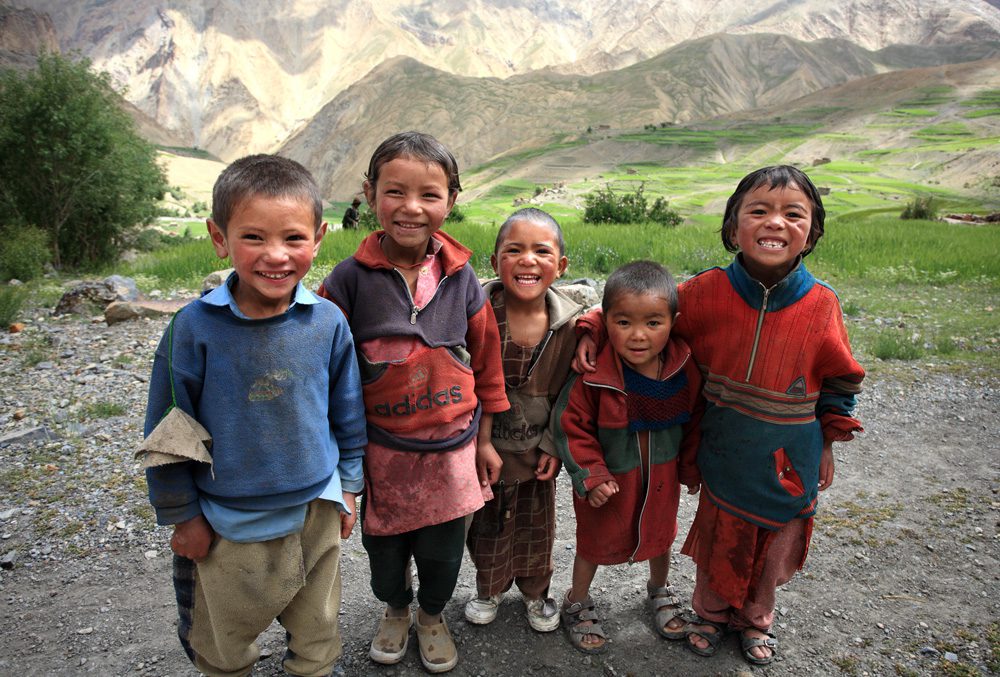
Conclusion – Lingshed as a Timeless Journey
In a world where convenience often overrides connection, Lingshed remains defiantly timeless. Nestled deep in the folds of the Zanskar Mountains, it is not merely a destination on a map, but a living reminder of what endures when a community chooses continuity over change. It is a place where ancient footpaths still guide travelers, where prayers echo across the ridgelines, and where time is measured not in hours, but in harvests, festivals, and shared meals.
To walk into Lingshed is to step out of the modern rhythm and into the slow, deliberate beat of high-altitude village life. Here, the distractions of the outside world fall away. What remains is something more grounded: the rustle of barley fields in the wind, the laughter of children at the monastery school, the quiet resilience of people who have mastered the art of living with less. This is what makes Lingshed not just remote, but remarkably rare.
Many travelers return from Lingshed with photographs and journals, but what lingers most is something intangible — a sense of having touched a deeper reality. Whether it’s the shared silence of a monastery morning or the spontaneous kindness of a homestay host, the experiences found here leave a lasting mark. This is not the Ladakh of glossy brochures; it is the Ladakh that whispers rather than shouts, that reveals itself slowly to those who arrive with humility and open eyes.
Lingshed teaches us that the most profound journeys aren’t always the ones with the most attractions — they’re the ones that return us to something we had forgotten. A quieter pace. A clearer sky. A closer look at the lives we rarely notice. In Lingshed, remoteness isn’t isolation — it’s preservation. And every step you take toward it brings you closer not only to a destination, but to a different way of seeing the world.
So, if you’re seeking more than a trek, more than a view, more than a story — Lingshed awaits. And in its stillness, you may just find the journey you didn’t know you needed.

Suggested Itineraries Including Lingshed
Planning a journey to Lingshed can be part of a larger trekking adventure or a standalone escape into the heart of the Himalayas. Depending on your interests, fitness level, and time, there are several routes that naturally incorporate Lingshed into an unforgettable exploration of Ladakh and Zanskar. Below are a few thoughtfully designed itineraries to help you envision your path.
1. 7-Day Photoksar to Padum Trek (Via Lingshed)
This classic Zanskar traverse is a favorite among experienced trekkers seeking high passes, remote villages, and cultural immersion. It starts with a scenic drive from Leh to Photoksar, followed by a series of trekking days over Singe La and SirSir La. Lingshed is your midpoint — a welcome rest and a cultural high point — before continuing on to Hanumil, Snertse, and finally Padum. Ideal for trekkers who want to combine nature with history and village life.
2. 5-Day Photoksar–Lingshed Loop Trek
For travelers short on time but eager to reach Lingshed on foot, this loop begins and ends in Photoksar. After crossing Singe La, you descend into Lingshed for a homestay night or two, then retrace via an alternate trail for variety. This route provides a satisfying taste of offbeat Ladakh trekking without committing to longer expeditions.
3. 10-Day Lamayuru to Padum Cultural Trek
This extended itinerary is for those who wish to deeply immerse themselves in the rich spiritual and cultural fabric of Zanskar. From the dramatic moonscapes of Lamayuru to the quiet valleys of Wanla and Lingshed, this trail passes through some of the most sacred and scenic zones in Ladakh. Ideal for photographers, slow travelers, and those with a special interest in Buddhist village life.
4. 3-Day Homestay Trail: Leh to Lingshed (Via Road + Short Trek)
Not all journeys to Lingshed need to be strenuous. With recent improvements in road access, it’s now possible to drive from Leh to Hanupatta or Zangla, and then complete a shorter hike to Lingshed. This is perfect for travelers who want to experience the authenticity of Lingshed village life without committing to a full trek.
5. Add-On: Lingshed as a Rest Day in Multi-Day Treks
If you’re doing a larger Zanskar circuit, consider planning an extra day in Lingshed to rest, interact with locals, visit the monastery, and gain deeper cultural understanding. This often-unplanned pause becomes one of the most cherished memories for many.
Each of these itineraries highlights the versatility of Lingshed — it can be a destination, a rest stop, or a cultural milestone. Whether your path is shaped by ancient trails or emerging roads, Lingshed offers a moment of stillness and story along the journey.
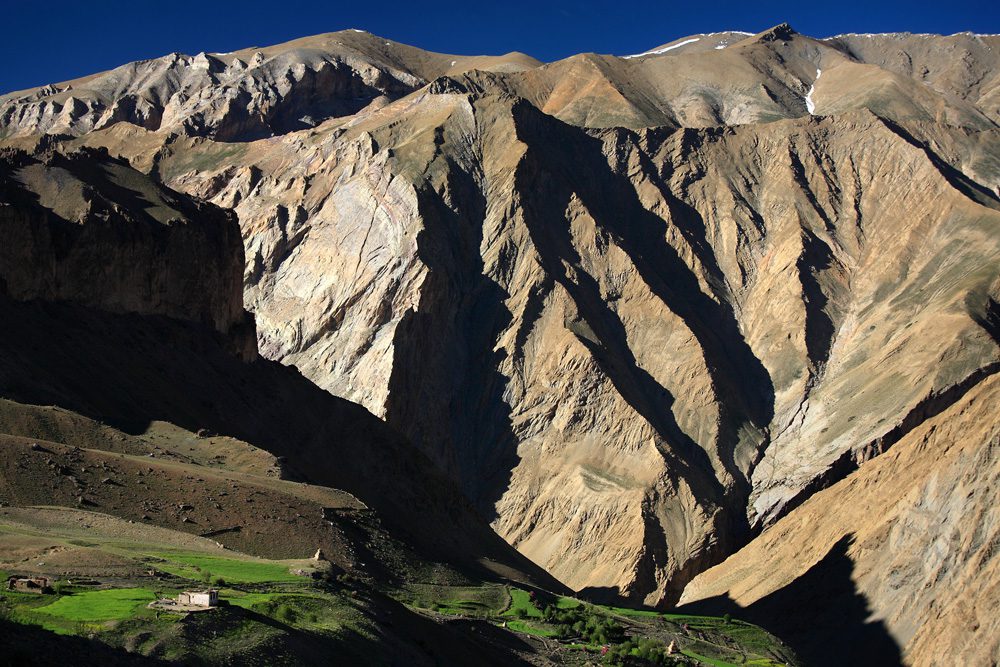
Frequently Asked Questions (FAQ)
Planning a trip to a remote Himalayan village can be exciting — and a bit daunting. Below are answers to the most common questions travelers have about visiting Lingshed. These insights are based on local knowledge, recent trekker reports, and updated logistical information.
Is Lingshed safe for solo travelers?
Yes. Lingshed is considered very safe for solo travelers, including solo female travelers. The community is welcoming, crime is virtually nonexistent, and homestays provide a secure and familial environment. That said, trekking to Lingshed alone without a guide is not advised due to challenging terrain and limited signage. Solo travelers should arrange logistics in advance and consider joining small guided groups.
Do I need permits to visit Lingshed?
Indian citizens do not require permits to visit Lingshed. Foreign travelers typically do not need a Protected Area Permit (PAP) for this region, but it’s always best to check in Leh before departure. Registration at the local tourist office or checkpoint may be requested en route.
Can I visit Lingshed in winter?
Technically yes, but it’s not recommended for most travelers. From November to April, Lingshed is isolated by heavy snowfall and sub-zero temperatures. There are no operational roads or regular trekking paths during winter. Only experienced trekkers with cold-weather expedition training and local support should consider attempting a winter visit.
How difficult is the Lingshed trek?
Trekking to Lingshed is considered moderate to challenging depending on the route. Most treks involve high passes (above 4,500 meters), steep ascents, and long walking hours. Altitude acclimatization is essential. While the trail from Photoksar is the most common, the Lamayuru–Padum route offers a more extended and varied experience. Porters and guides are highly recommended.
Are there shops or restaurants in Lingshed?
Basic provisions are available at small village shops, but there are no restaurants or cafes. Travelers should carry essential snacks, personal medicine, and water purification options. Meals are provided in homestays and usually consist of traditional Ladakhi food like thukpa, momos, or barley-based dishes.
Can I charge my devices in Lingshed?
Electricity in Lingshed is limited and largely solar-powered. Some homestays may offer brief charging opportunities, but power is not guaranteed. It’s best to bring a fully charged power bank or small solar charger for your camera, phone, or GPS device.
Is there mobile or internet connectivity?
No. Lingshed has no mobile signal or internet access. Some areas closer to Leh may have patchy service, but once you enter the Zanskar region, expect to be fully offline. Inform your family and contacts before departure and embrace the digital detox.
These FAQs should help you prepare with clarity and confidence. A journey to Lingshed isn’t just about where you’re going — it’s about how well you’ve planned, what you’re open to experiencing, and how ready you are to engage with a world that runs on different rhythms. And once you arrive, you’ll see: the questions melt away — and what remains is wonder.

